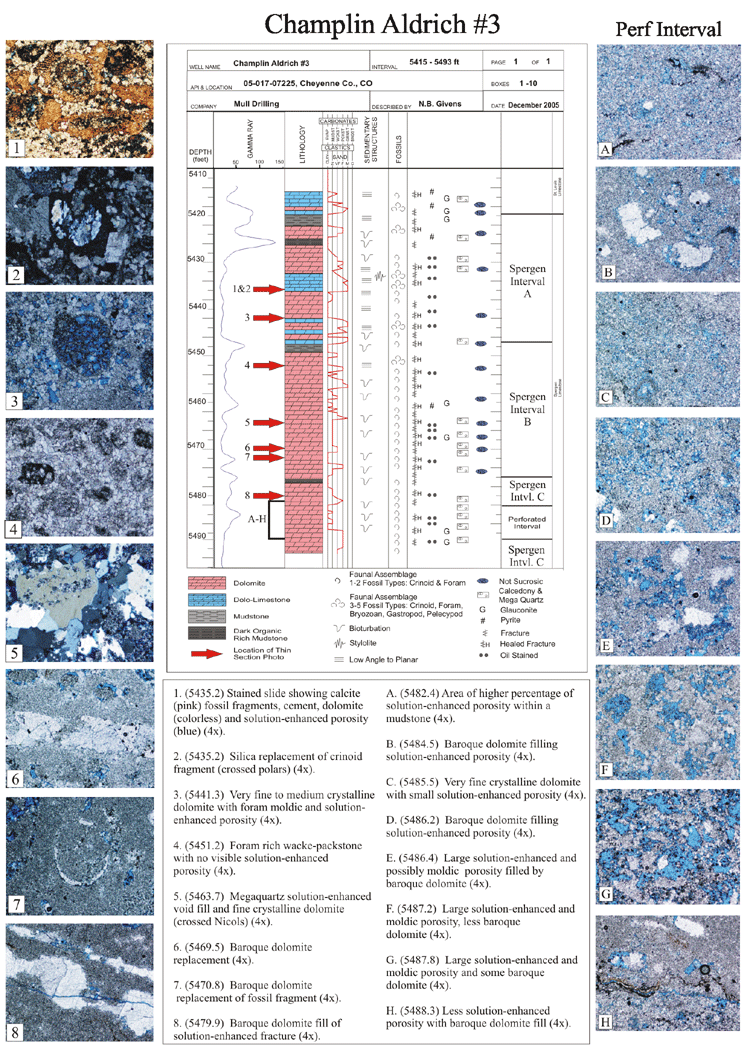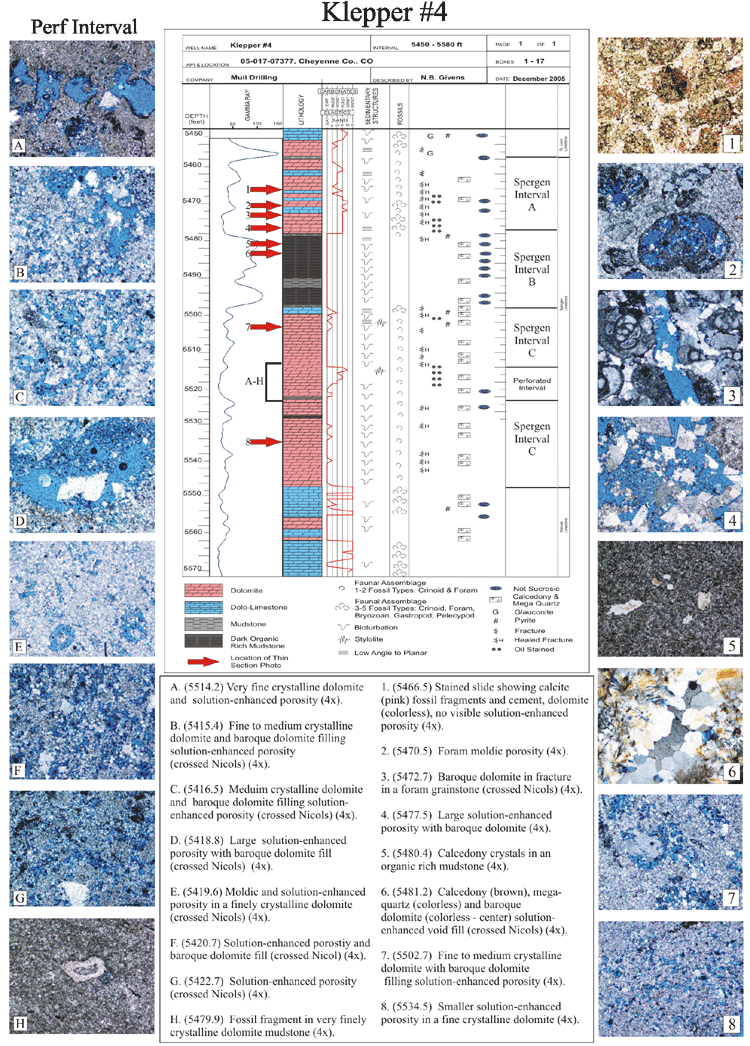Core Description and Thin Section Analysis


Core Description
Core description reveals a complex history for the reservoir. Based on the faunal and lithofacies assemblages, the depositional environment is interpreted to be on a normal marine shelf with a migrating shoal. Lithofacies range from mudstone to grainstone; however, the entire section has been heavily dolomitized, obscuring primary depositional structures. Porosity is intercrystalline, moldic, and solution enhanced. Moldic porosity is mostly of foraminifera, crinoids, and bryozoans. Fractures identified in the cores are typically filled with baroque dolomite.
Klepper #4 (K 4) producing zone has larger, more well-connected pores, whereas the Champlin Aldrich #3 (CA 3) has more moldic porosity and fractures.
Core of the CA 3 contains very little of the organic rich mudstone, whereas the K 4 contains a large section of organic rich mudstone. This differing amount of organic rich mudstone can be seen in other wells across the field; however, amount of organic rich mudstone apparently has no effect on production.
Thin Section Analysis
Two hundred representative samples from the Spergen from the two cores were taken and made into1”x 2” thin sections. Ninety-four thin sections were stained using the Dickson Formula (1965). This formula uses Potassium ferricyanide and Alizarin Red S to help differentiate between calcite and dolomite. It also will differentiate between high and low iron content in the calcite and dolomite. Calcite will turn pink to purple, with respect to low or high iron content, and dolomite will either stay colorless (no iron) or turn a turquoise blue (high iron content). The staining revealed a few 1’ to 2’ intervals within each core containing calcite. These intervals (referred to as dolo-limestones) occur at a range of depths. The pattern of selective dolomitization is not fully understood at this time.
Thin sections were used in the development of the following hypothesized paragenesis of the Spergen: 1.Deposition of mudstone to fossiliferous grainstone in a migrating shoal. 2. Begin first stage of dolomitization, replacement of lithofacies and dissolution to create solution-enhanced and moldic porosity. 3. Hydrothermal fluids, possibly from the Las Animas Arch feature, migrating through the Spergen and precipitating calcedony, megaquartz, and baroque dolomite, all three of which indicate hydrothermally active areas.
http://www.kgs.ku.edu/PRS/publication/2006/2006-14/p2-01.html
Last Modified May 2006